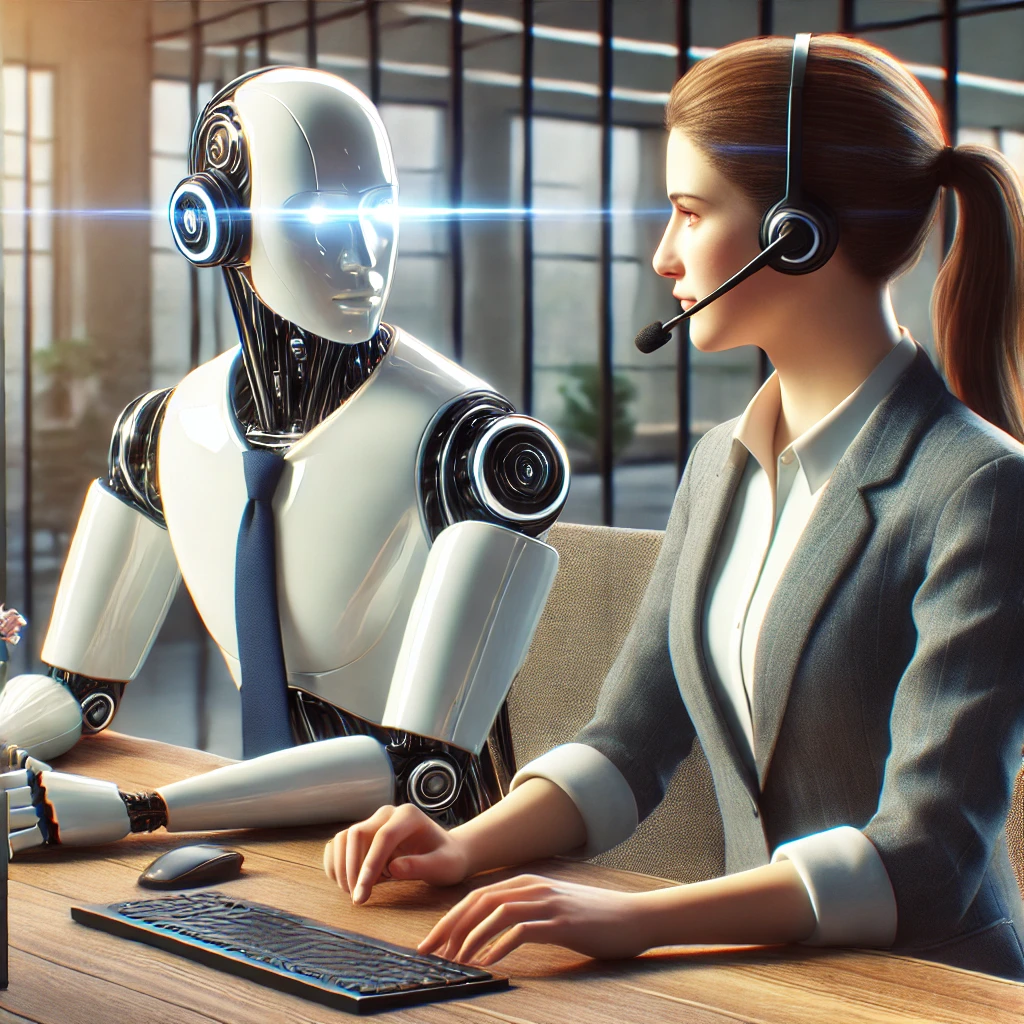Customer service has always been a cornerstone of successful businesses, ensuring customer satisfaction, loyalty, and problem resolution. However, the rapid advancement of artificial intelligence (AI), particularly Generative Pre-trained Transformers (GPT), has revolutionized how companies interact with customers. Businesses now face a fundamental question: can AI-powered chatbots fully replace human, or is a hybrid model the future of customer support?
This article explores the evolution of AI in customer service, the strengths and weaknesses of both AI chatbots and human, and what the future holds for AI-driven support systems.
The Evolution of AI in Customer Service
The integration of AI into customer service began with simple rule-based chatbots that could answer frequently asked questions (FAQs). These early chatbots followed predefined scripts and often frustrated users when inquiries deviated from expected inputs.
With the development of natural language processing (NLP) and machine learning, AI-powered assistants like GPT have significantly improved. Unlike early rule-based systems, GPT-driven chatbots can:
– Understand complex queries and respond contextually. – Learn from previous interactions to improve future responses. – Personalize interactions based on user behavior and preferences. – Process and analyze vast amounts of customer data in real-time.
These advancements have transformed AI from a basic automation tool into an intelligent customer service agent that can engage users with human-like interactions.
Comparing AI Chatbots and Human
To understand whether AI can fully replace human customer service representatives, let’s compare the two based on several critical factors.
1. Speed and Efficiency
AI chatbots excel in speed and efficiency. They can handle multiple customer inquiries simultaneously, provide instant responses, and retrieve relevant information in real-time. Unlike human, AI does not require breaks, shift changes, or sleep.
Human, however, take longer to respond, particularly during peak business hours. Customers often have to wait in queues, which can lead to frustration and lower satisfaction.
Advantage: AI Chatbots
2. Personalization and Emotional Intelligence
While AI has improved in understanding customer behavior and providing personalized responses, it still struggles with emotional intelligence. GPT-powered chatbots can recognize sentiment and adjust tone accordingly, but they lack genuine empathy and the ability to make intuitive decisions.
Human, on the other hand, excel in emotional intelligence. They can express empathy, understand frustration, and offer compassionate responses that go beyond programmed algorithms. For complex emotional situations—such as complaints, disputes, or sensitive requests—human interaction is often irreplaceable.
Advantage: Human
3. Cost Efficiency
AI chatbots provide a cost-effective solution for businesses. They reduce the need for large customer service teams, minimize operational costs, and improve scalability. A single AI chatbot can manage thousands of conversations simultaneously, reducing labor expenses.
Conversely, maintaining a team of human requires salaries, training programs, infrastructure, and management. This makes AI a more attractive option for businesses looking to optimize costs.
Advantage: AI Chatbots
4. Handling Complex Queries
While AI has advanced significantly, it still struggles with highly complex or unique inquiries. Chatbots often rely on pre-trained models and databases, meaning they can falter when faced with questions they haven’t encountered before.
Human possess critical thinking skills and problem-solving abilities that AI lacks. They can navigate ambiguity, assess customer emotions, and provide creative solutions that chatbots may not be able to generate.
Advantage: Human
5. Availability and Consistency
One of AI’s strongest advantages is its ability to provide 24/7 support without fatigue. AI chatbots can instantly respond to inquiries at any time, ensuring round-the-clock service without downtime.
Human agents, however, require scheduled shifts, breaks, and vacations, leading to potential service gaps. Additionally, different agents may provide inconsistent responses, whereas AI maintains a standardized level of service.
Advantage: AI Chatbots
The Future: AI-Human Collaboration
Rather than AI completely replacing human agents, the future of customer service lies in a hybrid model that leverages the strengths of both AI and human support.
1. AI for First-Level Support Chatbots can handle routine inquiries, provide instant responses, and direct users to relevant resources. This reduces the workload for human and allows them to focus on complex issues.
2. AI-Assisted Human GPT-powered tools can assist human by retrieving customer data, suggesting responses, and automating repetitive tasks. This enhances agent productivity and enables faster resolution times.
3. Seamless Handoff Between AI and Humans When AI detects that a conversation requires human intervention, it can seamlessly transfer the customer to a live agent. This ensures a smooth and efficient experience.
4. Continuous AI Learning As AI continues to improve, it will become more adept at understanding human emotions, handling complex queries, and delivering personalized experiences.
Conclusion
The rise of AI-powered customer service is reshaping the way businesses interact with their customers. While AI chatbots offer speed, efficiency, and cost savings, human remain essential for handling complex and emotionally charged situations. The most effective approach is a balanced integration of AI and human support, ensuring a seamless and high-quality customer experience.
As AI technology continues to evolve, businesses that embrace AI-human collaboration will be best positioned to deliver exceptional customer service in the digital age.



While AI chatbots are superfast and efficient, I still believe humans interaction is irreplaceable, especially sin complex situations. A mix of AI and humans seems like the perfect solution for providing quality service
Well yes its rare for a bot to understand what you want from it….🤮
ya but big companies thinking his wallet not they brain😅
ai customer service ? speedy, but cold//. humans > bots, tbh 💯.
done wit these dumb ai!! 🤬
huh ai customer service is here… or no? ai in autoresponder many companies bad 👎👎👎
like sure AI fast n cheap… but no REALLY feelings…😱😱
hfha ia is very expensive!
ai cs meh, humans still boss 👍
sorry man but ai already replacing humans😓😓
ai cs is lit 🤩 bots fast, humans heart 👍